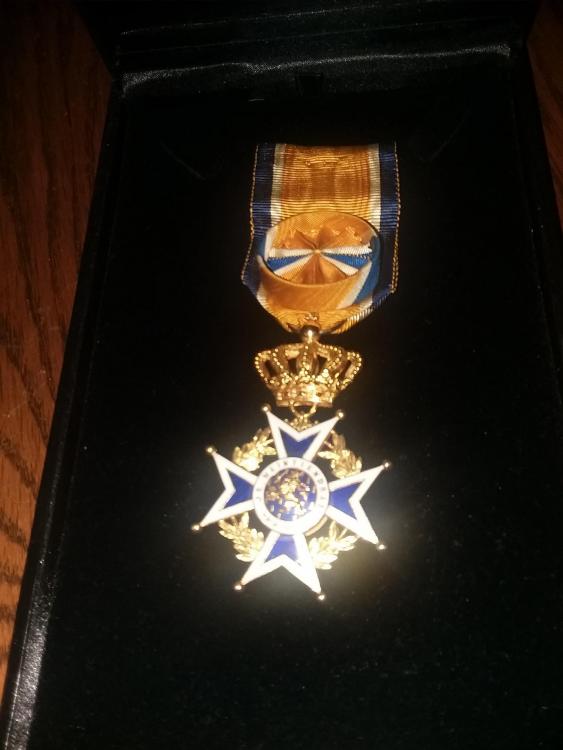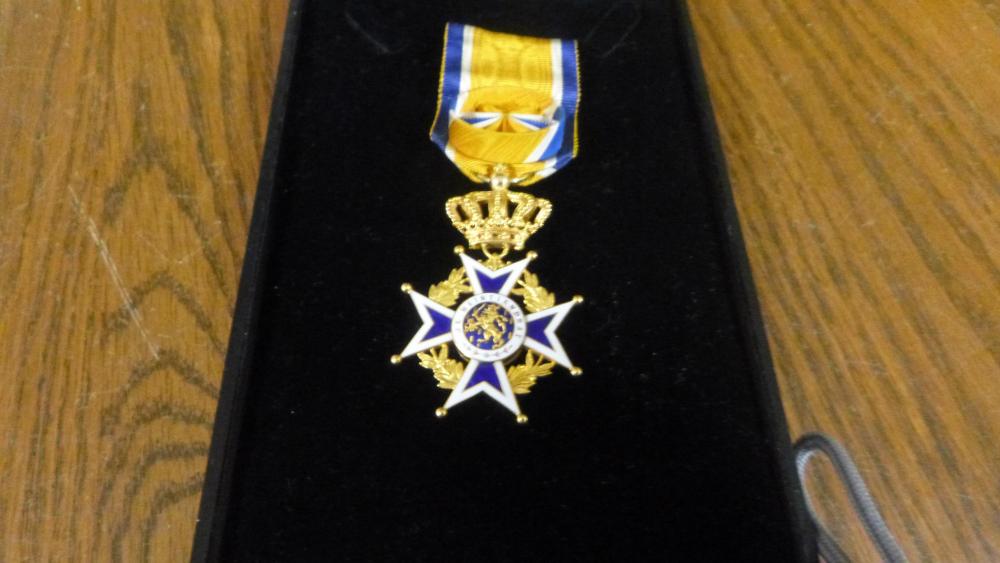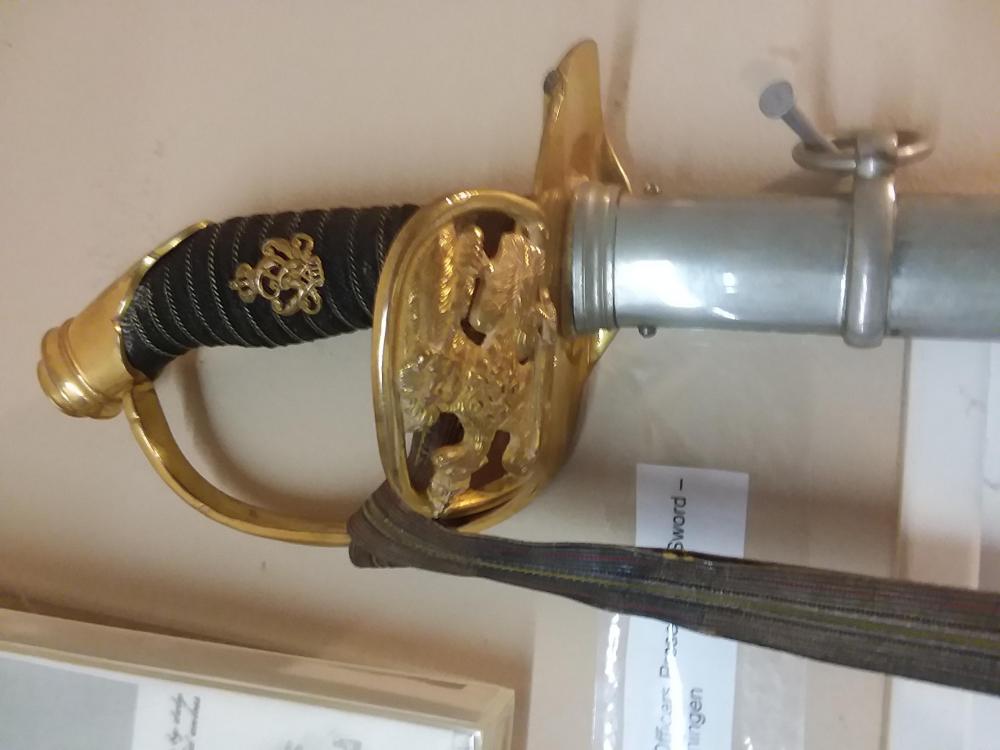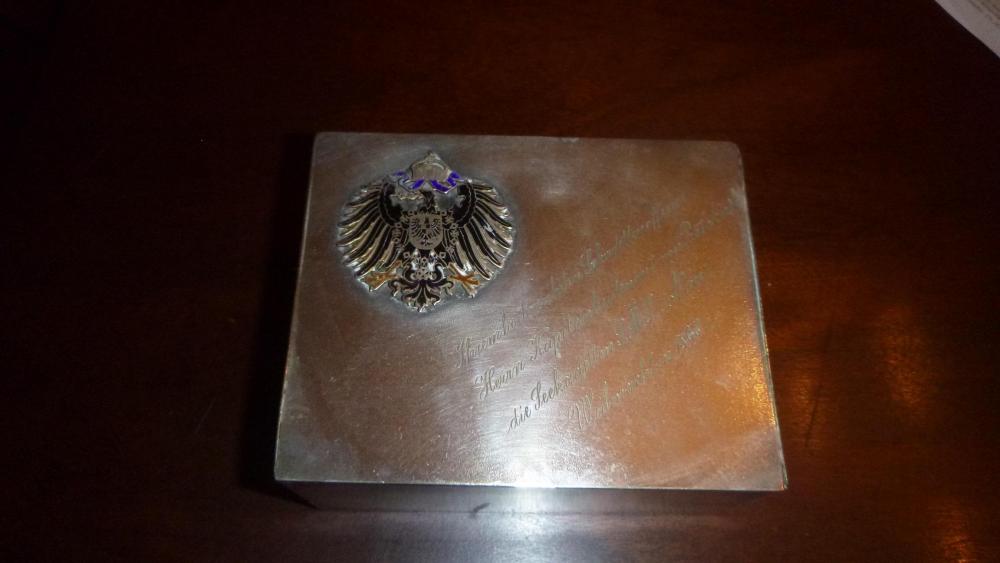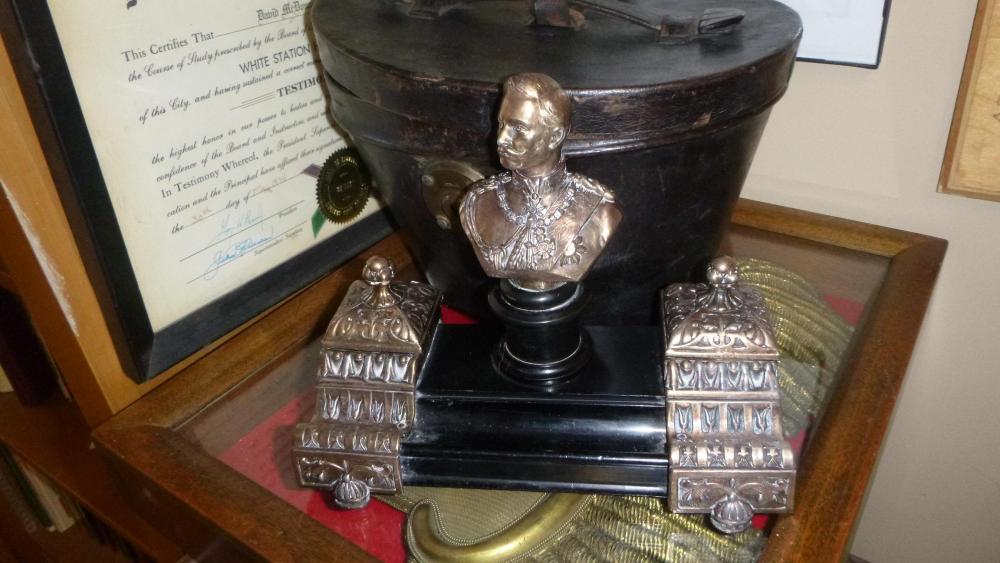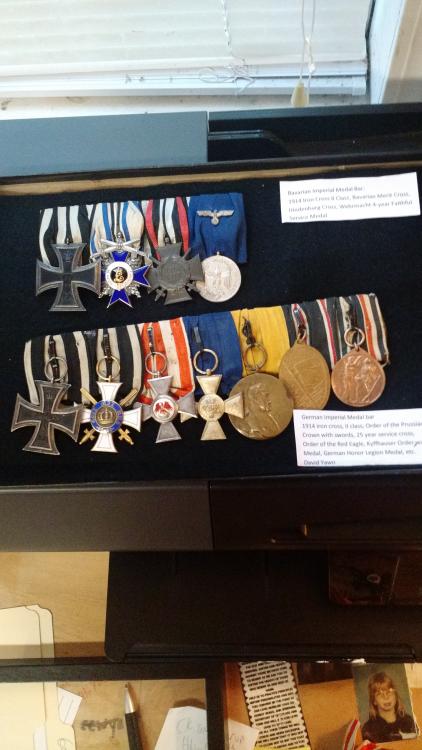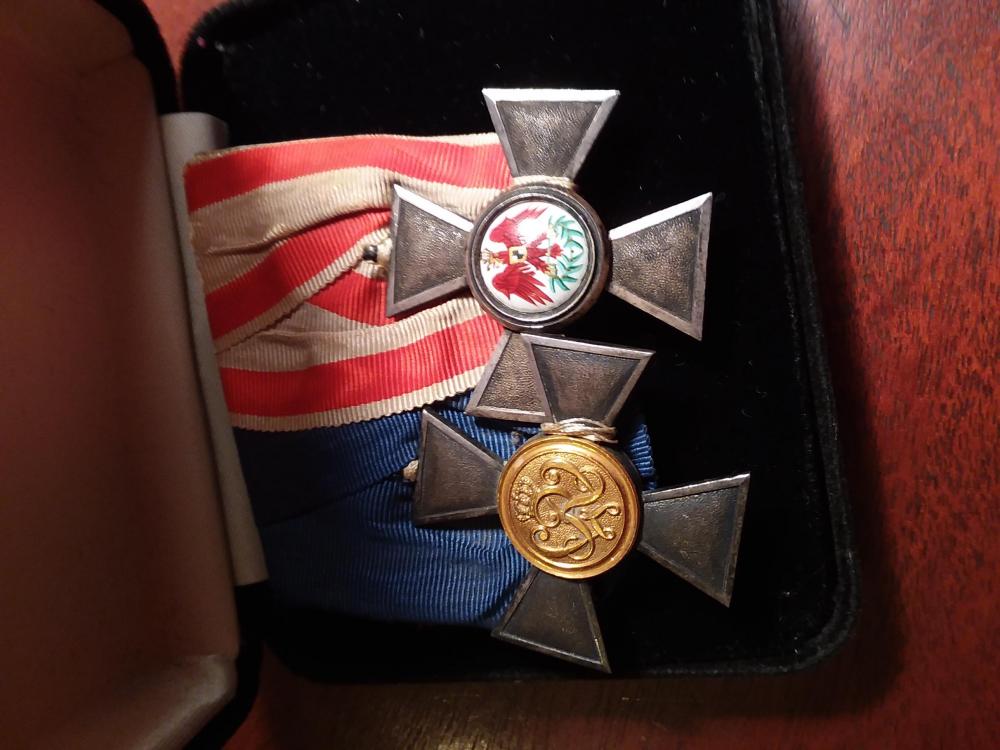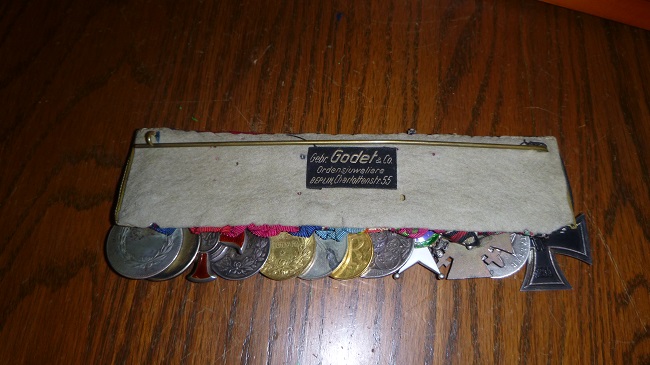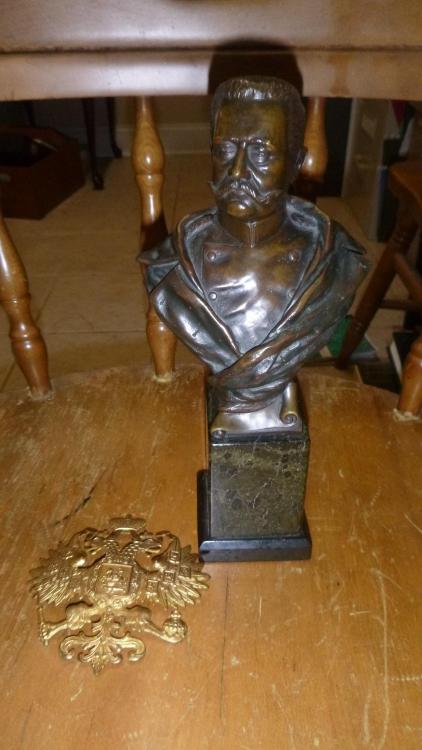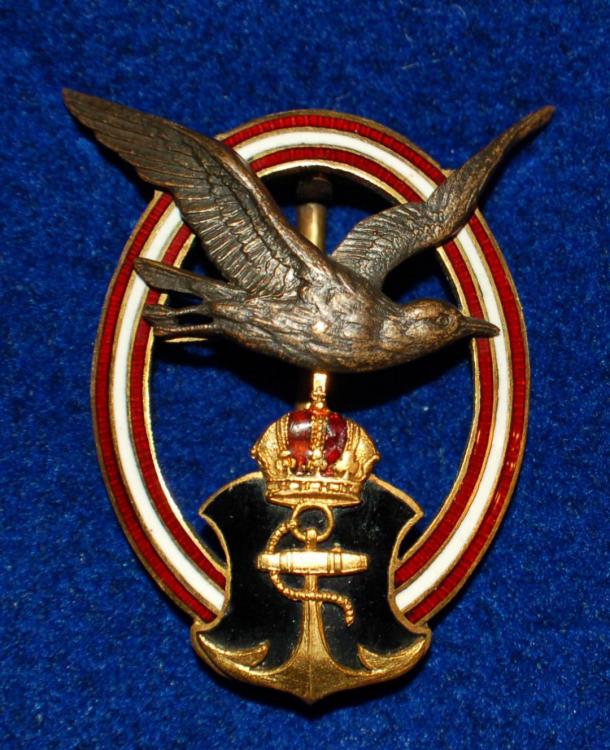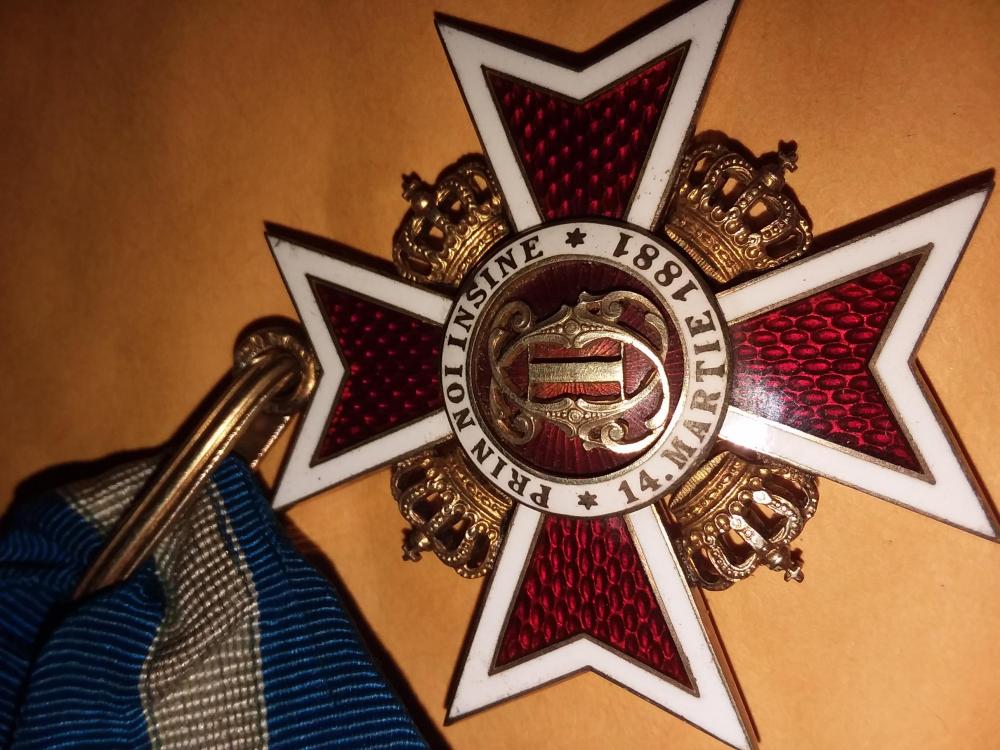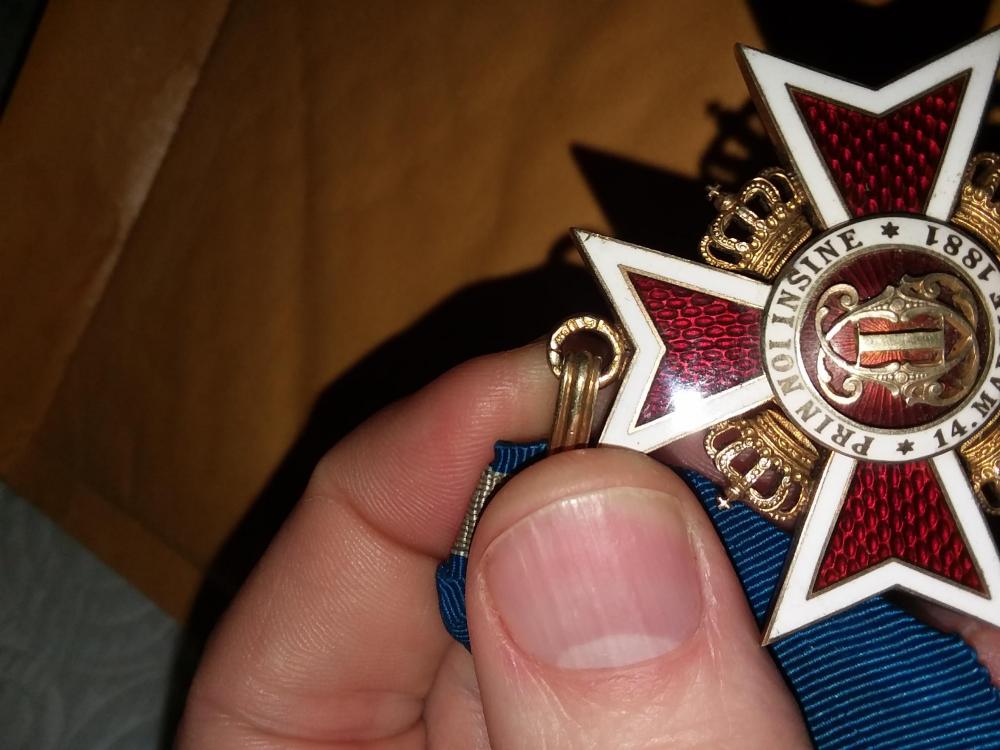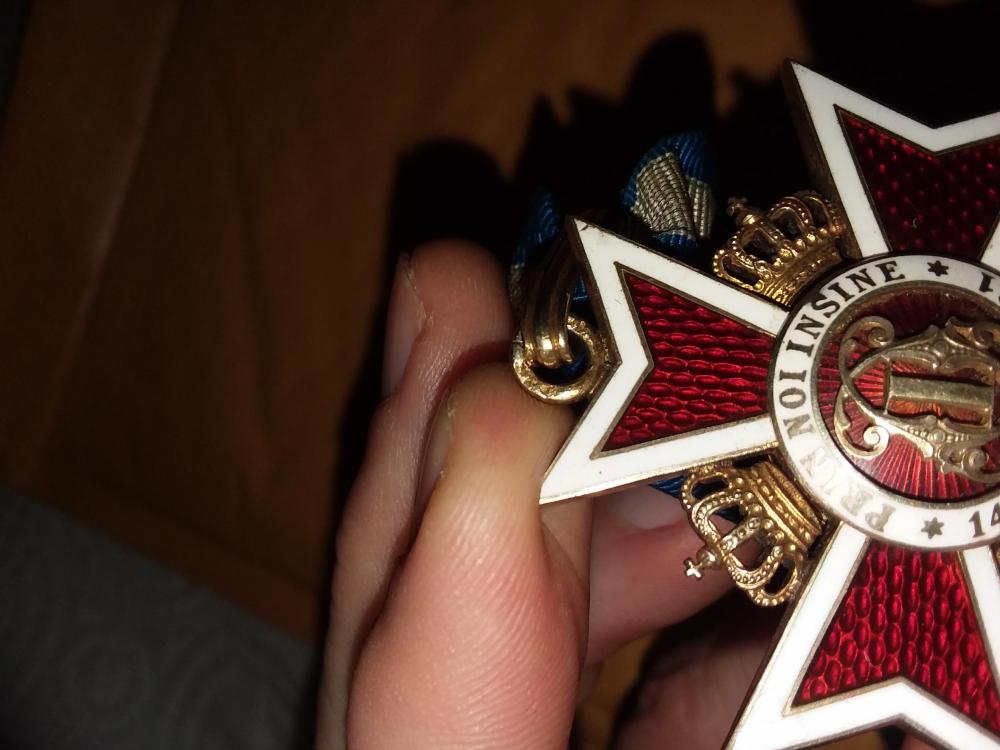-
Posts
132 -
Joined
-
Last visited
Content Type
Profiles
Forums
Blogs
Gallery
Events
Store
Everything posted by eurorders
-

Luxembourg Netherlands Order of Oranje-Nassau
eurorders replied to DutchBoy's topic in Northern European & Baltic States
Here is one in gold. Incidentally, I really like the book on the subject of Dutch orders: "Knights of Orange: Orders of the Netherlands" by Antti Ruokonen, do you? About 400 pages in color and first printed in 2015. -
What was the last year of issue of the Alexander Nevsky?
-

Imperial Russia Imperial Russian Orders for sale!
eurorders replied to Christophe's topic in Russia: Imperial
If it is real brassy gold shiny and reflective like chrome gold, beware. True gold has a majestic but deeper and fuller lustre. Real ones show an age old look AND SO DOES THE RIBBON. -

Imperial Russia Cross 1st class St Anne Julius Keibel
eurorders replied to PAVEL's topic in Russia: Imperial
does it weigh about 22 grams or more?? that is a goodly diameter, yes...supremely refined and detailed -
Whatever happened to the fine, large old pectoral orthodox crosses as in the ones shown??
-

Imperial Russia Enamel comparisons FAKE/Original
eurorders replied to GeorgeCL's topic in Russia: Imperial
After studying and collecting European enameled orders of decoration for two decades and attending various bourses, I believe it is safe to say that there is an underappreciation of the original work that went into enamels. This relative need for more knowledge is shared equally among dealers and collectors, alike. Granted, both camps are quick to pick out whether or not there is missing enamel, cracked enamel or flaking. What I propose in this article is a distillation of the jewelry-maker’s original art and the difficulty with which it was executed, particularly in orders and medals that predate the 1940s. Enameling, when done correctly, provides an outstanding example of human skill sets. The refined and sophisticated techniques did not arise out of thin air. Most often conducted by jewelers via authorization of either the crown or the chancellery/armorer of an order, fine enamel work was a craft driven and patronized by officers serving in the courtly realms of various kingdoms. The jewel-like brilliance of an order of decoration’s vitreous surface is durable and the colors range from the bold and vivid to the subtle and pastel. Special ovens used thermal sensors and each box of enamel powder was printed with the temperature at which the craftsman would need to bake it to achieve the desired color. There were strict steps of whether you baked one color before the other, otherwise the maker would ruin the entire piece. Continuing to address the subject of production from a macro standpoint, enameling involved fusing colored glass in powdered form to a surface. The glass is a flint glass containing between 25 percent and 40 percent lead oxide and the colors were obtained by adding small quantities of metallic salts. For instance, gold chloride gave a dark red, oxide of cobalt rendered a blue and iron oxide produced green. There will be more on these colorizing details later in the article. After being washed, the powdered enamel was mixed with water and applied to the surface and the piece was fired in a furnace. Many coats of enamel were required and, thus the piece had to be fired again each time. That summary, though, begs further details. There were sophisticated and often frustrating challenges. If one part of the multi-colored piece was messed up during the intricate process, the jeweler one way or another had to start over. Let me explain these issues more fully. Technical problems inherent in the enameling process with the need for successive firings was a challenging fact, as colors change during firing at different temperatures. That made the production of a fine enameled piece something to be marveled at once it emerged successfully at the end of the process. We are talking of product that rivaled the work of the finest jewelers and if one will study the varieties of European orders of decoration, they will see a level of quality that almost presupposes the competitiveness of court jewelers to outdo each other. As alluded earlier, enameling is an unpredictable art and a combination of intuition and science that demands perception as well as skills. We know that enamel is a vitreous glass glaze that is fused to a metal base, but continue to keep in mind that the chemical constituents are silica (sand), borates, alkalis (soda and potash), alkalines (lime, magnesia, lead) and oxides of metals for coloring. There are four basic types: opaque, opalescent, translucent and transparent. Production methods include: cloisonné, champlevé (raised field), basse-taille (shallow cut), guilloche (engine-turned), and plique a jour, also known as email de plique. There was also filigree enameling as well as en plain (on an open field). Blue enamel is produced by cobalt. Carbonate of copper produces green, manganese produces purple, oxide of gold produces some pinks and reds. The color is affected by the constitution of the molten glass (flux) and by the type or quantity of the oxide. To make things even more difficult, most enamel colors could not be mixed to give a hybrid or intermediate shade. To be sure, most of these had to be prepared with their own specific oxide. By changing the proportions of the ingredients, the opacity or transparency, hardness or softness of enamel was determined. It not only called for a knowledge of jewelry, but also of chemistry, for the maker was dealing with silica, arsenic oxide, potassium carbonate, borax, lead oxide, feldspar and the other elements and compounds. That speaks much of the ingredients, moreso than the process. Here are the steps. The article had to be washed and placed into a diluted acid to etch the surface in order to give a necessary adhering bond platform. In bassetaille enamel, the metal groundplate was chased or engraved so that its modeled surfaces beneath the enamel formed a part of the design. Undulating surfaces were visible through the enamel that covers them and produces an impressive effect upon completion. Raw enamel was pulverized with water until it reduced to a fine power. It was dried, then sifted through a fine sieve. Gum tragacanth, a white vegetable gum derived from sea plants, was applied in solution form to metal surfaces to bind the dry, sifted enamel before firing. Add to this tediousness the fact that most often, multiple layers were needed and each must be dried thoroughly then fired before the next color was applied. Kiln furnace at temperatures would reach between 600 and 850 degrees Centigrade (or 1110 to 1562 Fahrenheit) – all the while timed to brief intervals. Intense heat was therefore required to reach a temperature that caused the compounds to fuse to the metal. When zeroing in on a part of the medal or order, rather than the whole piece, focused flames had to be directed onto the enamel to keep it flowing freely. Any soldered joints had to be protected, too, even when the work was fired again. At no time could a soldered joint be left unprotected. Steel tongs were used for placing enamel pieces in and out of the furnace. Steel trivets, fire-clay stilts and wire screens supported enamel pieces for firing. Additionally be mindful that cooling in too quick order would have an undesired result and a brittleness that sooner or later could crack or scale off. As alluded to earlier, various colors would be fired at different temperatures, so that those colors able to withstand the greatest heat, such as blue and green, were fired first. Finally, the finish-up phase involved the filing down of the resulting enamel with carborundum until smooth, followed by a polishing with fine particulate pumice powder. As a form of addendum, one should mention that there is another type of enamel apart from the silicate hard-type enamel that is baked and that is the fluid cold type, the latter being used most often to do repairs nowadays. The cold type used in restorations dries at room temperature for up to a day. References Illustrated Library of Antiques - Enamel, Washington, DC: The Smithsonian/Cooper-Hewitt Museum, 1983. Maryon, Herbert. Metalwork & Enameling, Mineola, NY: Dover Publications, 2011. Mason, Anita. An Illustrated Dictionary of Jeweller. New York: Harper & Row, 1974. Winter, Edward. Enameling for Beginners, New York: Watson-Guptill Publications. 1962 -

Gold Romanian Order of CRown cmdr perhaps?
eurorders replied to eurorders's topic in Southern European & Balkan States
Thanks, regarding the weight, remember that the Type II badges in all classes were made smaller than the Romanian crown type Is, so please factor that in as well. It is SMALL relatively speaking to weigh an ounce. -
Thanks to both of you so very much. I mainly collect standard enameled European orders and am not well versed in these. Best to you...
-
-
someone offered to sell these to me and I primarily know about kingdom era European orders of decoration. Do they look genuine and if I ask him to send a photo of the reverses what should I look for? Are there many fakes out there? He did have a cased Order of the Iron Crown on the up and up, so that gave me some measure of assurance.
-

Gold Romanian Order of CRown cmdr perhaps?
eurorders replied to eurorders's topic in Southern European & Balkan States
How do I mechanically move the thread to that part of the forum? I'm not sure how to, thanks. -
I have recently bought at the SOS show a Romanian order of the crown, type II, commander. It weighs an ounce, or about 32 grams. It is very very detailed and immaculately made. I wonder if it was made by a jeweler. If it IS gilded, it has no wear whatsoever on the gilding. On the suspension ring it carries these hallmarks: 750 DW -- OR 150 DW (the hallmark runs off of the rin top edge), and on another part, 38 (for the year 1938 most likely) and something that looks like a crown hallmark. I know people say the Kingdom of Romania orders were not of gold but could this particular specimen be??
-

Order of the Bath help need!
eurorders replied to sturm's topic in Great Britain: Orders, Gallantry, Campaign Medals
Sturm, some of these reference books might help. I am doing it the lazy way by copying my library list. Title Author Year Publisher Orders and Decorations of Europe in Color Hieronymussen 1967 MacMillan British Orders and Decorations Risk 1973 Hayward Orders and Decorations Purves 1972 Hamlyn/Sun Books Ephemeral Decorations Gillingham 1935 Amer Numis Soc. Debrett’s Guide to Heraldry and Regalia Williamson 1992 Headline Orders and Medals of Bulgaria Patrov 2000 Voenno Izdatelstvo Book of Orders of Knighthood and Decorations of Honour of All Nations Burke 1858 N&M Press The History of the Order of Bath and Its Insignia Risk 1972 Spink British Orders, Decorations and Medals Hall 1973 Balfour Court Jewelers of the World Jacob 1978 Postgraduate International Catalogue of Military and Naval Campaign Medals and Gallantry Awards 1980 Sothebys Orders, Decorations, and Insignia, Military and Civil Wyllie 1921 Forgotten Books European Orders and Decorations to 1945 Duckers 2007 Shire British Orders and Decorations Duckers 2004 Shire Bulgaria Imperial Orders and Medals 1887-1945 Furlan 1996 Militaria House Parade Medals of the Third Reich Yanacek 2008 Schiffer Book of Orders and Decorations Mericka 1975 Hamlyn Orders and Decorations Mericka 1967 Hamlyn Orders and Decorations of All Nations Ancient and Modern Civil and Military Werlich Second Edition, 1973 & 1990 Quaker Press Spinks Catalogue of British and Associated Orders, Decorations and Medals Joslin 1983 Webb & Bower Imperial Austrian Medals and Decorations Von Falkenstein 1972 -o- private Militaria: A Study of German Helmets & Uniforms 1729-1918 Kube 1990 Schiffer Orders and Decorations of All Nations Werlich 1965 Quaker Press Military Medals & Decorations of the United States and Europe Ball & Peters 1994 Schiffer Medal Yearbook 2004 Mackay & Mussell 2004 Token Publishing Vernon’s Guide to Orders, Medals & Decoration with Valuations Vernon 2000 Self/private The Medal Collectors’ Companion Collecting and Identifying Orders, Medals and Decorations Vernon 1995 Self/private Royal Insignia: British and Foreign Orders of Chivalry from the Royal Collection Patterson 1997, 1998 The Royal Collection Medals Ribbons of Imperial Austria and Germany Neville 1974 Balfour Publications Militaria – Die Militar Dienstzeichen 1849-1989 Steiner 1993 self Deutsche Orden & Ehrenzeichen 1800 – 1945 Nimmergut 2017 Battenberg Bewertung Katalog Deutschland 1871-1945 Orden Und Ehrenzeichen Niemann 2009 Self/private History of the Early Orders of Knighthood & Chivalry Neville 1978 Albemarle 4 volume Borna Barac series called Reference Catalogue Orders, Medals and Decorations of the World instituted until 1945. Borna Barac 2009 through 2013 OBOL Ribbons and Medals Dorling 1974 Philip British and Foreign Orders, War Medals and Decorations Payne 1911, reprinted 1981 Hayward The Queen’s Orders of Chivalry De la Beree 1964 Spring Books The Order of the British Empire Galloway 1996 Stephen Austin and Sons/Spink/Central Chancery of Orders of Knighhood Orders of Knighthood, Awards and the Holy See Cardinale and van Duren 1985 Van Duren The Medals Decorations & Orders of the Great War 1914-1918 Purves 1975 Hayward Royal Orders – The Honours and the Honoured Vickers 1994 Boxtree British Orders & Awards Gordon 1968 Kaye & Ward The European Orders of Chivalry Boalt, et al 1971 Southern Illinois University Press Collecting Medals and Decorations Purves 1968-1978 Hayward A Glossary of Terms Used in Phaleristics – The Science, Study and Collecting of the Insignia of Orders, Decorations, and Medals Laslo 1995 Dorado Publishing Russian Orders, Decorations and Medals Werlich 1981 Quaker Press Knights of Orange: Orders of the Netherlands Ruokonen 2015 Same The German Cavalry from 1871 to 1914 – Uniforms and Equipment Herr and Nguyen 2006 Verlag Militaria Swords of Germany 1900/1945 Angolia 1988 Bender Publishing Spiked Helmets of Imperial Germany Vol. I Infantry Regiments, Pioneer Battalions, General Officers Trawnik 2005 Schiffer Imperial German Edged Weaponry Vol. I Army and Cavalry Johnson, Diehl, & Wittmann 2008 Schiffer Grosser Deutscher Ordenscatalog bis 1918 Graf Klenau 1974 Battenberg Sovereign Knights – Foreign Orders of Russian Emporers 2010 Moscow Die Bayerischen Orden und Ehrenzeichen Schreiber 1964 Bayerisch Armeemuseums



